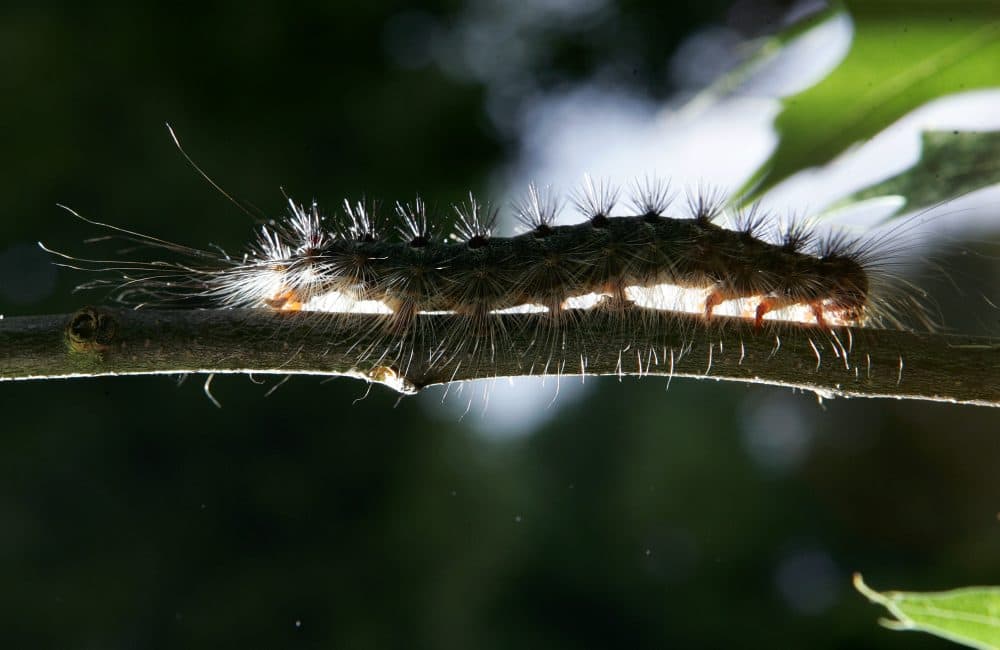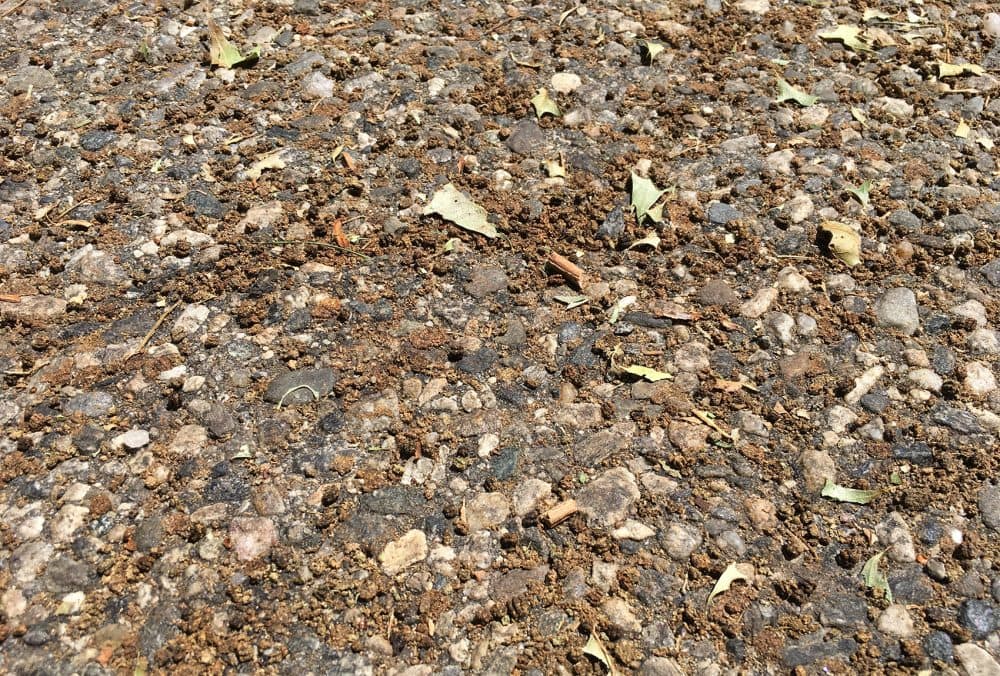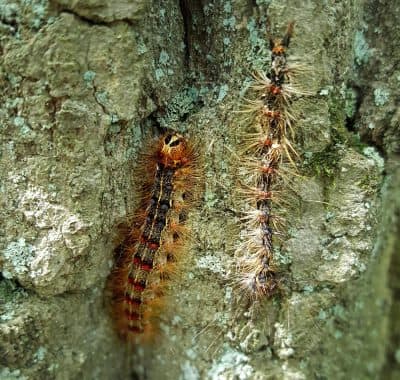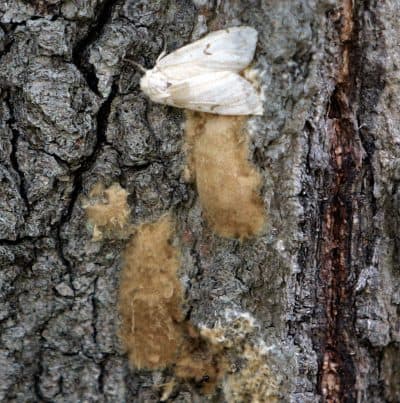Advertisement
When That Rain-Like Sound In Your Oak Trees Is Actually Gypsy Moth Caterpillars Pooping
Resume
If gypsy moth caterpillars have taken over oaks or other trees around your property, you're probably familiar with a "pitter-patter, almost rainfall-like sound," as Tawny Siminsky describes it. She's an entomologist with the UMass Extension Landscape, Nursery and Urban Forestry Program.
That sound is not the caterpillars munching on leaves. As Simisky explains, it's the end result of that eating.
"You're actually hearing [the caterpillars'] droppings — or the excrement — falling from the tree canopy as they're feeding," she says.
And if you're not dodging the caterpillars or their droppings falling from above, you're dealing with them all over your driveway, walkway or deck.

But there's a larger issue beyond the yuck factor.
Over the last two years, Massachusetts has seen extensive defoliation by these furry little pests. This year was supposed to be better, but it looks like some pockets of the state — in Hampshire, Worcester, Plymouth, Essex and Barnstable counties — are still being overtaken by the soon-to-be moths. This Tuesday, the Department of Conservation and Recreation will begin an aerial survey to assess defoliation. The process will take about two weeks.
Simisky spoke with WBUR's Jack Lepiarz on All Things Considered.
Interview Highlights
Tawny Siminsky: We get complaints from homeowners that have frass —[excrement] — covering their back decks. And when it rains after they get a good coating of that, it becomes slick and slippery.
Oaks are [the caterpillars'] preferred [trees], but gypsy moth caterpillars have quite a large menu. They can feed on over 300 species of trees and shrubs. Other preferred hosts can include poplar, birch, witch hazel and alder.
Jack Lepiarz: And can they ultimately kill a tree by defoliating it?
Eventually, over time — especially when you have consecutive years of defoliation, such as [what] has occurred in the past three years in some locations in Massachusetts — you can get tree mortality as the trees are weakened by the feeding of the gypsy moth caterpillars. They're not able to photosynthesize and produce enough sugars to get them through the winter. They can also become susceptible to secondary pests such as certain wood-boring beetles.

How does this year so far appear to compare to the last few?
My gut feeling is we're going to have fewer acres defoliated, and that is due to a gypsy moth caterpillar-killing fungus known as Entomophaga maimaiga. In 2016, over 352,000 acres were defoliated by gypsy moth. And in 2017, we had over 923,000 acres defoliated by this insect.
In the week of June 24th, roughly, of 2017, we had a statewide outbreak of this caterpillar-killing fungus, and it killed hundreds of thousands of caterpillars, easily, that otherwise would have developed into adult moths. And the adult stage, although [the moths] don't feed, they're the ones that are responsible for mating. And the females lay the egg masses, which overwinter, and that provide us with the population for the current year.
So we did encourage — over the fall of last year, and winter — that homeowners would scout their properties and look for these egg masses, which are kind of brownish and tan in color. And depending on how many you see on your property, it can give you a good idea of how many caterpillars you may have the next season.

The females will lay their egg masses just about anywhere, so you can find them stuck to tree trunks, branches. You can see them on the sides of your home and stairs. They'll lay their eggs on picnic tables, other outdoor furniture — so any flat surface, really.
Is there anything that a property owner can do to try and decrease this year's caterpillar population before they turn into gypsy moths, or anything they can do to try and lower the population looking ahead to next year?
There's an active ingredient — as far as chemical management goes — that can be used on older caterpillars, called spinosad. And this is a reduced-risk active ingredient derived from a naturally occurring substance made by soil-dwelling bacterium, with fewer risks to human health and the environment.
The best thing to do after the adult stage in July is to scout your property. Look for those brown or tan colored egg masses. If you or neighboring areas such as nearby forests have a lot of those egg masses, in the springtime when the eggs first hatch you might contact a professional and consider using Bacillus thuringiensis (kurstaki), or Btk for short. This is another reduced-risk active ingredient that can be used on the younger gypsy moth caterpillars.
This segment aired on June 22, 2018.

